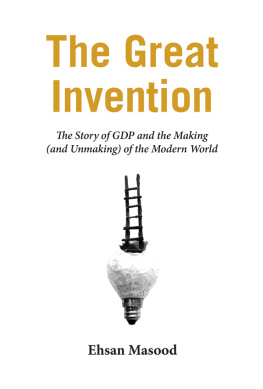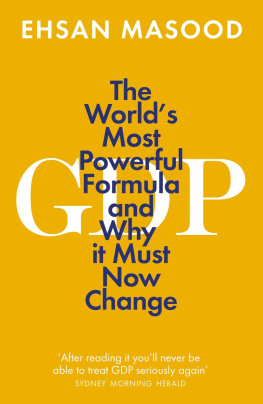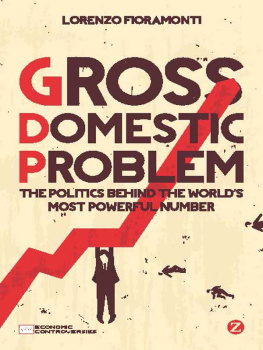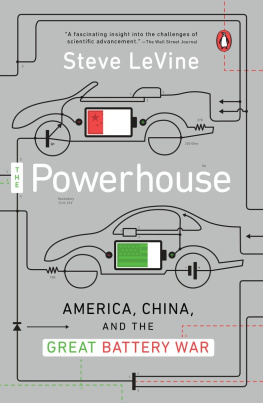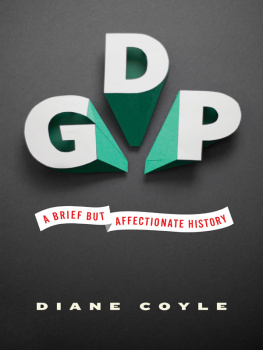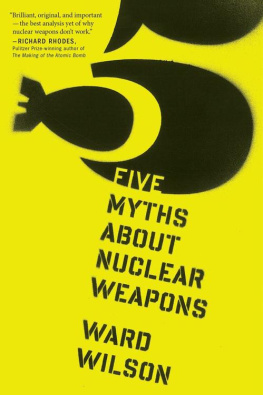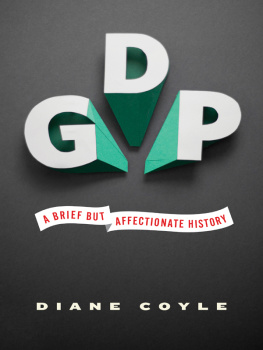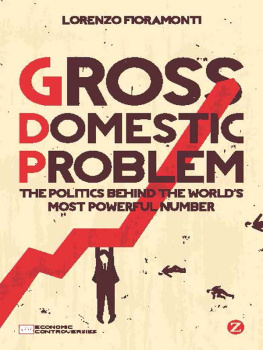
The Great
Invention
The Story of GDP and the Making
and Unmaking of the Modern World
Ehsan Masood

THE GREAT INVENTION
Pegasus Books Ltd.
148 West 37th Street, 13th Floor
New York, NY 10018
Copyright 2016 Ehsan Masood
First Pegasus Books edition June 2016
Jacket design by Miriam Sugranyes
Interior design by Maria Fernandez
All rights reserved. No part of this book may be reproduced in whole or in part without written permission from the publisher, except by reviewers who may quote brief excerpts in connection with a review in a newspaper, magazine, or electronic publication; nor may any part of this book be reproduced, stored in a retrieval system, or transmitted in any form or by any means electronic, mechanical, photocopying, recording, or other, without written permission from the publisher.
Library of Congress Cataloging-in-Publication Data is available.
ISBN: 978-1-68177-137-3
ISBN: 978-1-68177-181-6 (e-book)
Distributed by W. W. Norton & Company, Inc.
www.pegasusbooks.us
In memory of
David Dickson
(19472013)
T his book tells the story of how a little-known formula emerged from the embers of the Great Depression and World War II to become the global standard for how to run an economy.
The story is told through the remarkable people who made it happen and those, equally remarkable, who foresaw trouble ahead. They were, in each case, the children of war and poverty, but they had a single-minded determination to create a better, more prosperous, more equitable, and more peaceful world than the one they had been born into. They had radically different ideas on how to go about it. And by and large, the ideas of only one group, those who wished to keep the status quo, prevailed.
My interest in the topic was sparked more than thirty years ago in a school economics class in Karachi where our teacher introduced GDP by scribbling six symbols with white chalk on a slate blackboard. A few months later, in another economics class, this time in London, a different teacher scribbled the same symbols.
I remember wondering why the economy of one of the worlds poorest countries, which at the time was also run by a military dictatorship, could be judged in the same way as one of the richest. I resolved to one day find out, and this book is the result of that quest.
Although The Great Invention draws on economics, history, politics, and science, it is not principally a work of history or of science; nor is it a textbook of macroeconomics. There are many and better accounts of what GDP is and how it is compiled. There are also more comprehensive studies of economics and the environmentmany referenced in the notes at the end of this book. The Great Invention instead presents a narrative account, though one that is based mostly on authentic and sometimes neglected source materials, together with the results of hundreds of interviews. These have been conducted over nearly two decades during the course of my working life as a journalist navigating the boundary between science and policy.
GDP is an idea that began with good intentions but has undoubtedly outlived its usefulness. The answer, however, is not to abandon it, as some are advocating. More than anything, I want to show that GDP can changeand change so it can measure the things that matter. Indeed, it must if we are to begin to reverse many of the problems that have beset our societies, including rising inequality and possible environmental collapse.
What began as a useful measure to assess a countrys prosperity and then measure it against its peers has trapped our societies and our leaders into a system from which we are unable to free ourselves. We must, and this book shows how we can.
This is your heritage. Original documents are now in your hands. If they are damaged or lost, they cannot be replaced and a piece of history will be lost.
Notice in the research room,
National Archives and Records
Administration, Washington, DC
I t is late spring 2014 in Washington, DC, a couple of days before the National Cherry Blossom Festival and Im standing on a windy Pennsylvania Avenue outside the offices of the US National Archives. This giant of a building, a colossus of concrete and Corinthian columns, holds Americas founding documents. Visitors from all over the world come here to catch a glimpse of the Declaration of Independence and the Gettysburg Address.
In the course of writing and researching this book, manuscript tourism has become something of a passion of mine, too. But I was here to look for a much less famous, indeed forgotten, piece of American history. I say forgotten because when I inquired from London some months earlier, the archivists werent certain that they had the document I was looking for.
The paper in question is the first comprehensive listing of Americas national income. It is called National Income, 192932 ; published at the end of January 1934, it was commissioned by a committee of the US Senate a year earlier. The task was handed to a talented young economist who had emigrated from Russia. For Simon Kuznets, National Income would be the job that would define the rest of his career. But it would also eventually estrange him from later US administrations. He would become an outsider to a process he helped create, in spite of later securing the Sveriges Riksbank Prize in Economic Sciences in Memory of Alfred Nobel, commonly known as the economics Nobel prize.
There are copies of Kuznetss document circulating online, but I wanted to view the original.
A solitary policeman greeted me at the front of the building. Hello, Im visiting from London, and Ive come to view the first edition of the US national income, I explained, a little tentatively. He took a quick look at my bag and waved me through to the reception area, a cavernous space devoid of much natural light where I waited by a desk occupied by two of his colleagues.
I repeated my request, and after several phone calls to staff in different parts of the building, I was sent to a fourth officer. At this point I was beginning to wonder if they would let me through, when the police officer loudly said, Belt. Nervously, I started to remove my belt. The officer broke into a smile and pointed to a small conveyor belt where I was to place my jacket and laptop. I had been cleared by security and was allowed to proceed.
With the security ritual over, I passed through a set of giant metal double doors, into an elevator that took me to the fifth-floor Research Room. There in a box file I hoped to find Kuznetss original document.
There was a six-page summary typed in the familiar Courier font of the time, double-spaced on paper only slightly yellow with age. The box also contained memos from the office of Senator Robert M. La Follette, who had commissioned the report, as well as letters from organizations asking the reports publishers for copies.
But the original document was missing. To this day no one knows where it has gone.
W ashington, DC, December 7, 1999: members of President Bill Clintons economics team were assembled for a press conference to announce the US governments achievement of the century. The once invincible Federal Reserve Board chairman Alan Greenspan was there, as was Clintons top economics adviser, Martin Baily; Commerce Secretary William Daley and Undersecretary Robert Shapiro were in the audience too. As the identity of one of the great inventions of the 20th century was revealed, the only notable absentee was Clinton himself.
Next page
